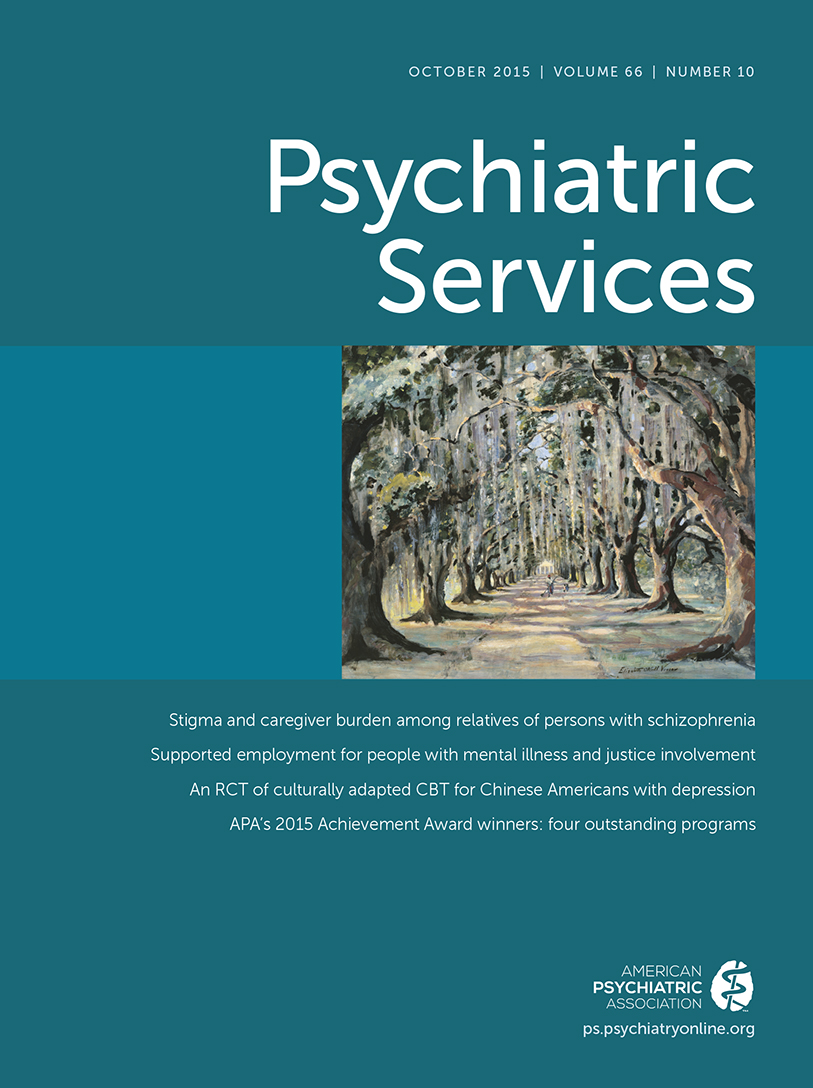Suicide Prevention in Patient and Nonpatient Populations
TO THE EDITOR: We commend Hoffmire and colleagues (1) on their detailed description of recent suicide rates among veterans that was published in Psychiatric Services in Advance in May and in the September issue. As the authors point out, their report contains the first assessment of suicide among the U.S. veteran population that includes veterans who did not access Veterans Health Administration (VHA) services. The publication of their report arrives on the heels of our own description of suicide among all members of a large health maintenance organization (HMO)—a study that was the first to include nonpatient members, that is, members of the HMO who did not access any of the HMO services during the membership year of death (2). Together, these two studies provide a heretofore unavailable baseline for health care systems that are engaged in important efforts to prevent suicide.
Juxtaposition of these two studies highlights important findings. Both reports come from health care systems identified as global leaders in suicide prevention. The veteran sample was observed from 2000 to 2010, and our HMO sample was observed from 1999 to 2010. The veteran sample was large enough to allow for adjustment of suicide rates for age, gender, and suicide risk, whereas similar adjustments were not feasible in our smaller HMO population. Hoffmire and colleagues found that among veterans who used VHA services, suicide rates declined during the ten-year study period, whereas suicide rates among veterans who did not use VHA services actually increased. In our HMO network population, suicide rates of HMO members did not change over time, regardless of HMO service utilization.
It is important to note that in both studies a decrease in suicide rates was observed among active patients who accessed health care services during a time when suicide prevention efforts were under way within the health care system. (The HFHS’ Perfect Depression Care Initiative was launched in 2001, and the VA’s Mental Health Enhancement Initiative and Suicide Prevention Program were implemented in 2005.) In the HMO sample, however, the decrease in suicide was observed only among patients who accessed the HMO network’s specialty mental health services, which is where the suicide prevention effort took place. In fact, suicide rates actually increased among HMO patients who accessed general medical services—but not specialty mental health services. Hoffmire and colleagues did not describe this type of subgroup analysis of their sample. Given the clinical, scientific, and strategic importance of the VA’s Suicide Prevention Program, it is crucial to understand what impact this initiative may have had on veterans who actually accessed VHA mental health care services, especially because, as the authors point out, veterans with mental illness are one of the populations most vulnerable to suicide.
1 . Changes in suicide mortality for veterans and nonveterans by gender and history of VHA service use, 2000–2010. Psychiatric Services 66:959–956, 2015 Link, Google Scholar
2 : Suicide in a health maintenance organization population. JAMA Psychiatry 72:294–296, 2015Crossref, Medline, Google Scholar



